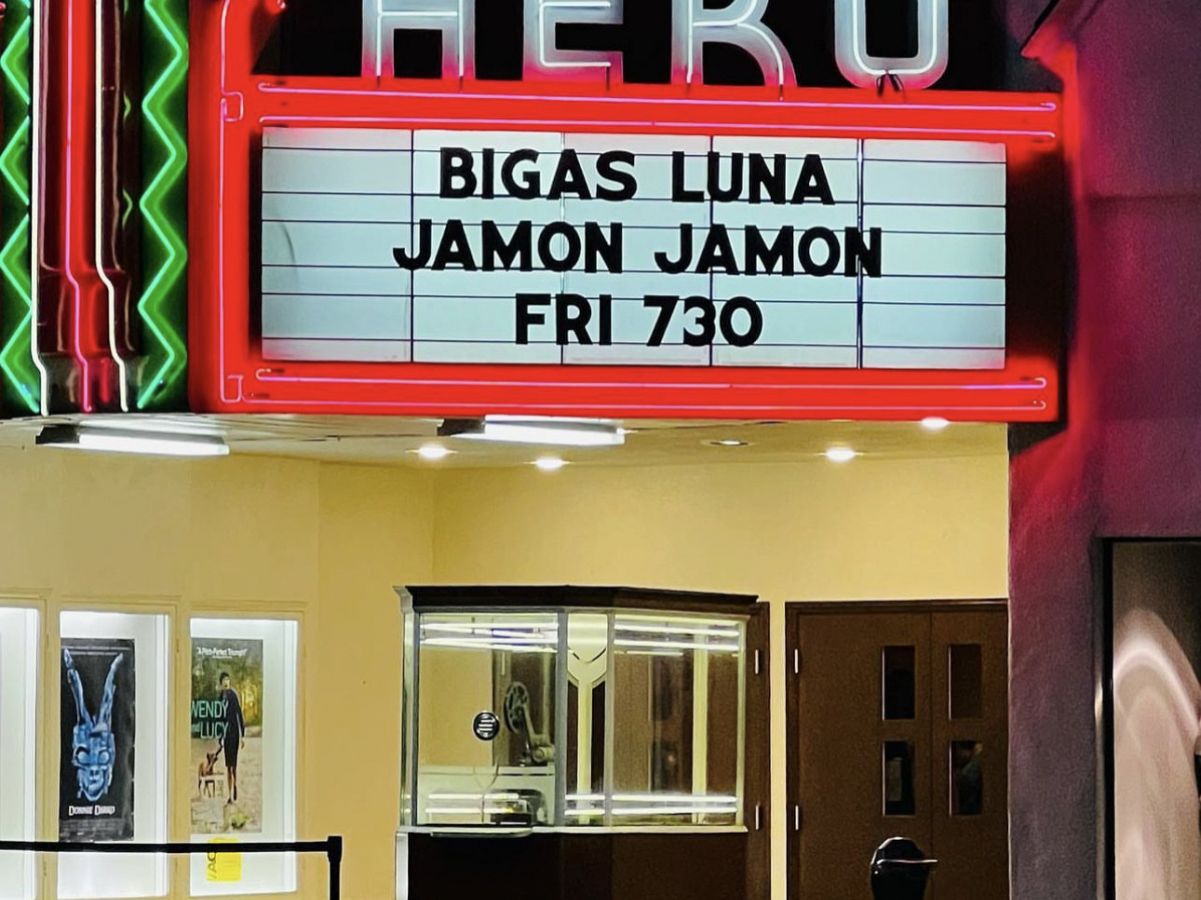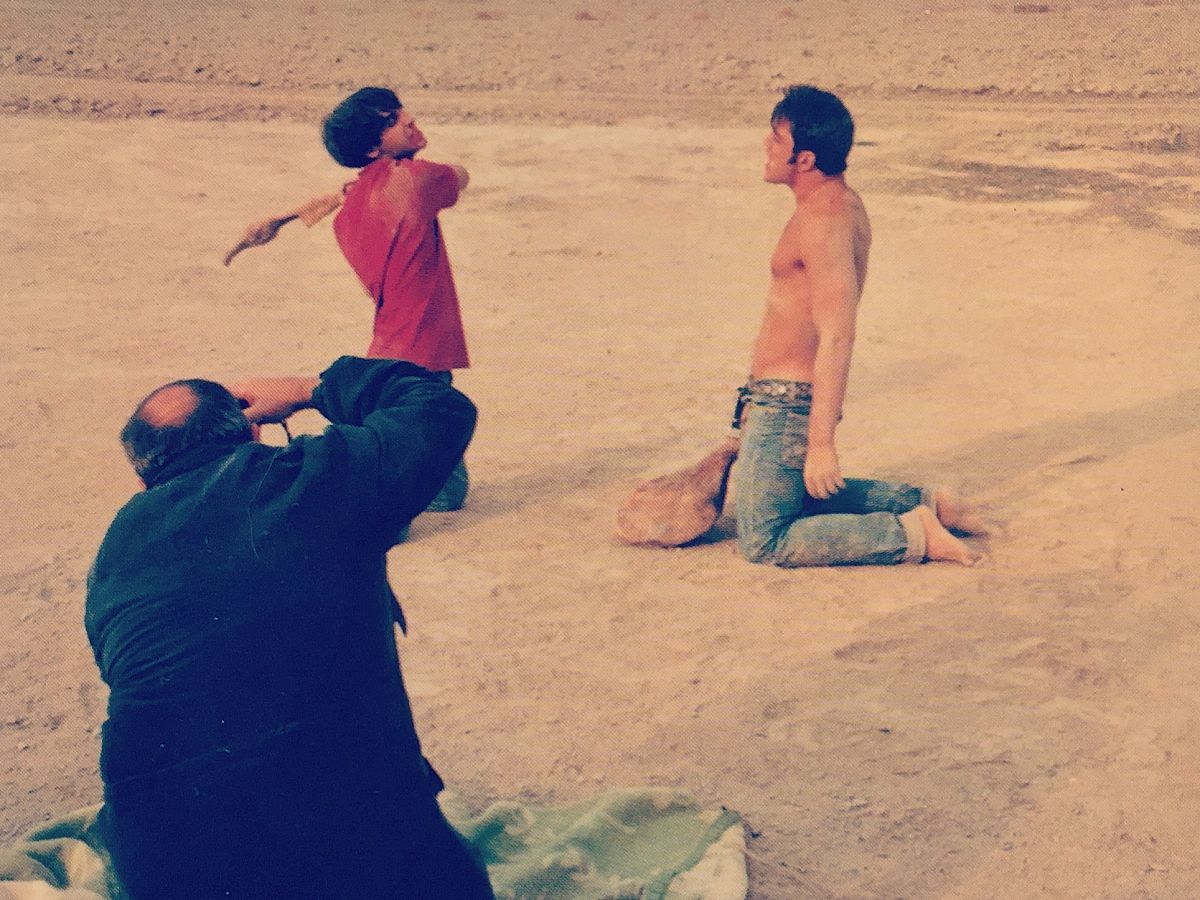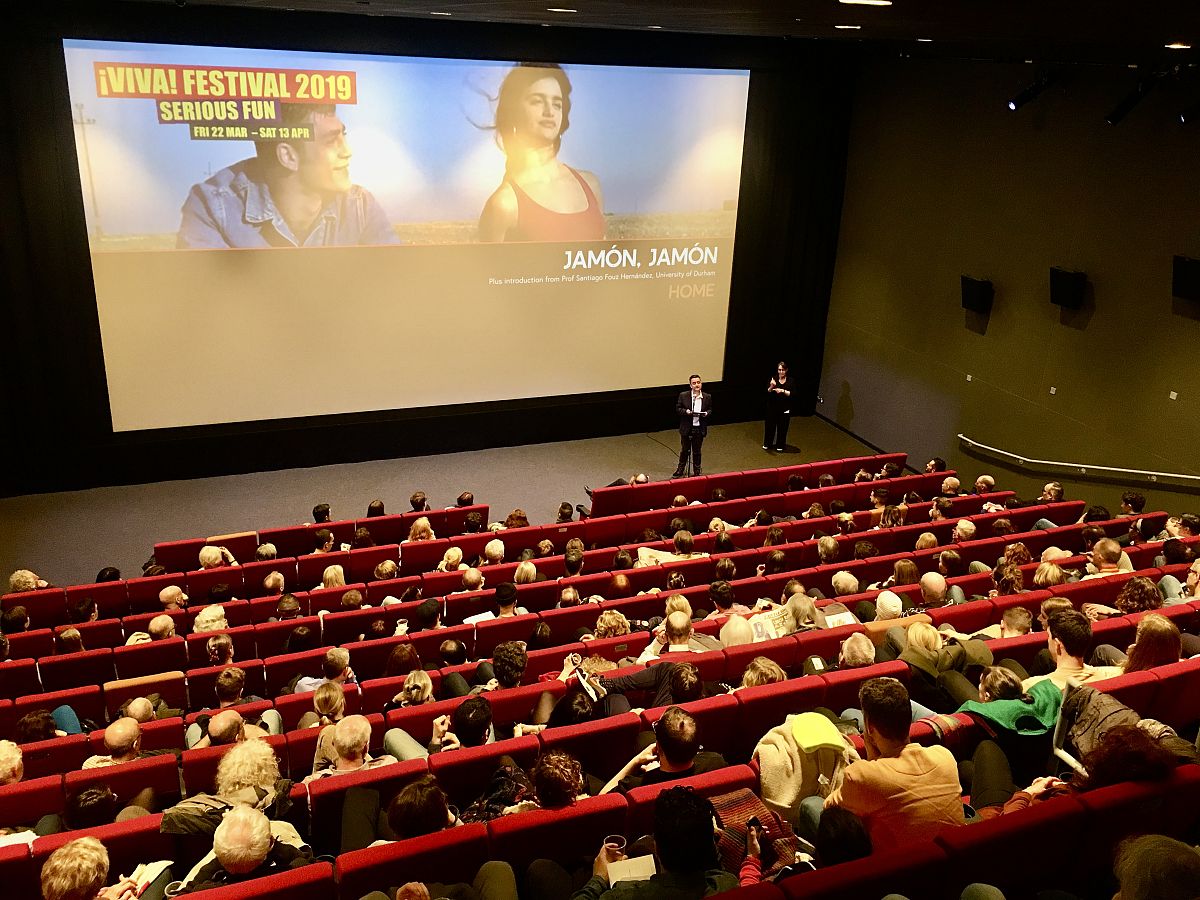Professor Santiago Fouz-Hernández, from our School of Modern Languages and Cultures, showcased his specialist research on the film director, designer and artist Bigas Luna at The Bigas Luna Tribute in Los Angeles in March this year.
The Bigas Luna Tribute launched in 2015 as a collaboration between the filmmaker’s daughter Betty Bigas and Professor Santiago Fouz-Hernández, sharing his extensive research with audiences and contextualising the work of one of Spain’s most iconic filmmakers.
Since its launch, the Tribute has had over 100 screenings in more than 20 cities worldwide, with guest speakers from academia to the Spanish film industry.
Dialogue caught up with Santiago to find out more about him and his research.

Jamon Jamon advertising in a cinema
When did you first become interested in Bigas Luna films?
When I was very young. I was not allowed to watch his films because they dealt with some taboo subjects and were quite sexually explicit, at a time when Spain was still getting over 40 years of dictatorship and heavy censorship.
His early films were both very obscure and a breath of fresh air. I remember watching the film Bilbao (1978) in the late 80s just before I left home to go to university. I felt drawn to the film’s raw aesthetics, the low lighting, the disquieting soundtrack, the surreal imagery. It all felt very visceral and captivating.

Scene in a Bigas Luna film
What would you say is Bigas Luna’s biggest contribution to Spanish cinema?
Many people would say that he was a great actors’ director. Of course, he is perhaps best known for ‘discovering’ now-global stars such as Penélope Cruz, Javier Bardem, Jordi Mollà or Verónica Echegui. For me his biggest contribution is his fearlessness and his ability to take risks with the aesthetics and stories of his films.
In the book I am writing, I claim that one can study the history of Spanish cinema since the transition and even the recent history of Spain by studying his films. His first feature, Tatuaje (1976), was released the year after Franco died and two of his most important films, Bilbao (1978) and Caniche (1979) were released within months of the abolition of censorship in Spain. Later in his career he became fascinated with the idea of Spanish national identity and its evolution after Spain joined the European Union in 1986 and also the internal reconfiguration of Spain and his native Catalonia. His films ask the question: how can we be Spanish and European (and Catalan) at the same time? Can we celebrate some traditions and shed others as part of our evolution as a modern, democratic nation? The films suggest that these are not mutually exclusive.
His work is remarkable also in terms of format. He was always experimenting with new media, mixing Super 8, 35mm and digital and subverting genre conventions. The films are full of easily recognisable references to a wide range of Classical and Contemporary artworks, intentionally disregarding formal hierarchies. These formal aspects are closely intertwined with and reflect the carnivalesque atmosphere of the films and their narratives.

Viva Festival 2019
What is it like to work on the Bigas Luna Tribute?
The Tribute was initiated by Bigas Luna’s daughter, Betty Bigas, who I met almost by chance in San Francisco in 2015. She had organised the retrospective at the iconic Roxie Theater in the Mission. I was invited to introduce one of the films and ended up introducing the whole retrospective. The screenings were sold out. I thought it would be a good idea to bring the retrospective to Newcastle, which we did in 2016, again, with great success. In collaboration with Tyneside Cinema, we added a menu inspired by the films and an exhibition of the ‘Barbaric Comedies’ video arts at Vane Gallery. Betty trusted me with the organisation of future events and the maintenance of the website and social media. We are now in our ninth year, having visited 22 cities in eight different countries including Australia, Costa Rica, Mexico and various places in Europe and the USA. We have surpassed 100 screenings and we have more events planned for the next two years.
Organising the events is a lot of work due to the many moving parts that one needs to engage with, from presenting a proposal to the venues or festivals, securing availability of the prints, liaising with management in various venues and organisations, working with film programmers and guest speakers, preparing programme notes, film intros and travel, to dealing with some aspects of marketing before, during and after the events, all while starting to prepare the next one at least a year in advance. I also produce and co-present a monthly podcast partly linked to the touring retrospective.
However, despite the workload, the events have given me access to information and contacts that have enormously enriched my research, have allowed me to collaborate with inspirational colleagues (other Bigas Luna specialists), have taught me new skills and, most importantly, have increased the visibility and longevity of these films. My favourite part is talking to audiences and answering their questions not just about the films, but also about Spain and Spanish culture. Witnessing the amount of interest that these films continue to generate decades later is very rewarding.
Do you have a favourite?
Several. I am very fond of Jamón jamón because I have been teaching it for 23 years in Durham and students write excellent essays that still surprise me to this day. It is also a huge highlight in the Bigas Luna Tribute events. Bilbao is the film that introduced me to Bigas Luna and reminds me of a time when people were more open to new ideas and to openly discuss taboo subjects in ways that would be unthinkable today.
My personal favourite is perhaps La camarera del Titanic/The Chambermaid of the Titanic (1997). It is a great celebration of the art of storytelling, imagination, passion, and brief encounters. In many ways this film encapsulates everything that life and Bigas Luna’s films are about. He loved life and the pleasures of life. One can find refuge in his films and celebrate what really matters.
